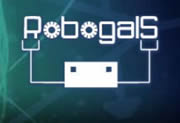The measurement and management of deformation in underground excavations is a key responsibility of geotechnical and mining engineers. A critical aspect of these roles is to ensure ground support is ensuring there is sufficient capacity for the expected demand.
Current methodologies for monitoring deformation and ground support serviceability limits require measuring displacement at distinct points, or using visual observations. These current methods limit the assessment to a qualitative interpretation of deformation across the entire excavation.
Recent advancements of Light Detection and Ranging (LiDar) technology is introducing a new method for monitoring deformation. These allow a full three-dimensional image of extended sections of an excavation to be precisely scanned and subsequent scans to be compared. The results can provide valuable information on the magnitude, direction and extent of regions exceeding the ground support serviceability limits. This new method provides a quantitative assessment across the entire excavation being monitored.
The implementation of regular scanning has shown to be highly advantageous for mines with swelling or squeezing ground, but also at mines with rapid deformation. The use of LiDar technology as a routine deformation measurement tool for geotechnical and mining engineers and further applications are discussed in more detail in this paper.


